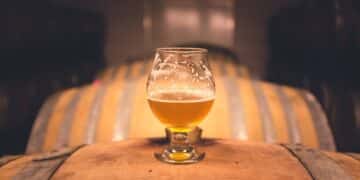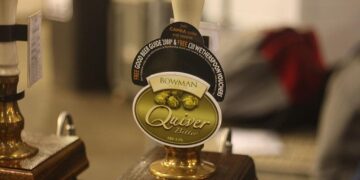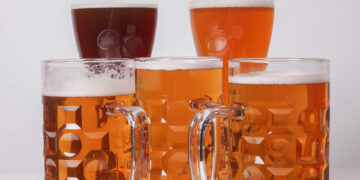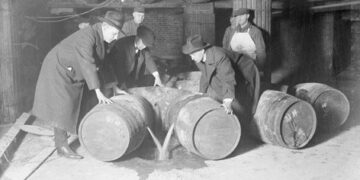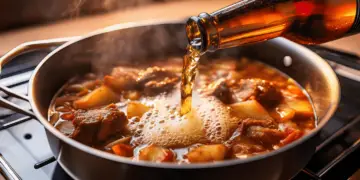For those particular people for whom beer is more than just a social lubricant, home brewing can serve as a great way to further explore the versatility of taste and texture on offer. Once the initial effort is taken to get started, brewing your own beer is a relatively simple and rewarding way to better understand its variable qualities.
Getting Started
The home-brewing process is exactly the same as the brewing process used by small to large scale breweries and can be broken down into 5 stages, as seen in related article ‘What Makes a Beer?’ – To reiterate, these stages are:
- Mashing: The soaking of ground malted barley in hot water, producing ‘sweet wort’.
- ‘Sweet wort’ is then mixed with hops, producing ‘hopped wort’.
- The hops are then removed and yeast is added to the ‘hopped wort’ mixture. A secondary fermentation is favoured by more experienced brewers, but is not essential.
- The beer is left to mature and sugar (the easiest method) or carbon dioxide is then added to increase carbonation.
- The beer is then packaged in bottles or kegs.
In order to be able to undergo these five processes it is necessary to either buy a homebrew kit, or buy the equipment separately to brew beer from scratch. A homebrew kit is the easiest way to get started and possibly the best way for a complete beginner. All that you will need to add to the homebrew kit is hot water – all the ingredients are supplied in the correct quantities, allowing you to emulate popular beers with relative ease. Starting in this way enables you to come to an understanding of the basic process before moving on to the more complicated process involved in ‘half mash’ and ‘full mash’ brewing. Half mash brewing is nearly as simple as home-brewing, but involves putting together a recipe from separate ingredients and brewing in specialist containers, which can be bought from home-brew suppliers. Full mash brewing involves starting from scratch, and is only recommended for the experienced who are sufficiently confident to extract the malt from the grain and source all of the other ingredients in their raw natural state.
Equipment
If you feel confident enough to go beyond the use of a home-brew kit (which only involves the addition of boiled water) you will need the following equipment:
- Brewing bin: to hold the beer.
- Kettle: for boiling the beer. For a large homebrew, you will need an industrial size kettle. Some bins come with inbuilt kettles.
- Paddle: for stirring the beer and paddling off malty build ups on the surface.
- Syphon: To transfer beer to kegs or bottles.
- Steriliser: to keep everything clean and prevent the build up of harmful bacteria.
- Thermometer: to test the temperature of you brew; different varieties of beer have optimum brewing temperatures.
From here, you will need to amass the ingredients for making beer, in short: water malted, or unmalted barley, hops, brewing sugar and possibly pressurised carbon dioxide gas. From here it is best to get advice from a small scale brewery (who will be happiest to help if you are using the most authentic methods or home brewing expert (put simply, a friend who has done this before!).
Whilst the process of brewing your own beer is relatively simple and cost effective, consulting books, and/or joining an enthusiasts club or association can save a lot of trouble and mess. The Society of Independent Brewers was established in 1980 to promote the centuries old tradition of home brewing and provides events information to appeal to both the beginner and expert alike.
Enjoying Your Homebrew
Brewing your own beer takes just a few hours initially, with a 4-6 week period for the beer to mature to a drinkable stage. Following this you will be free to savour your very own beer, and to make the necessary adjustments should you wish to try again. This is undoubtedly a rewarding way for the beer connoisseur to come to a closer understanding and working relationship with this very versatile drink. The potential for social activity around your newly made beverage is huge, and experimenting with food combinations (see related article: Beer and Food Combinations) amongst friends is a great way to sensibly promote the worthiness of beer, whilst catching up on news!







